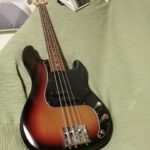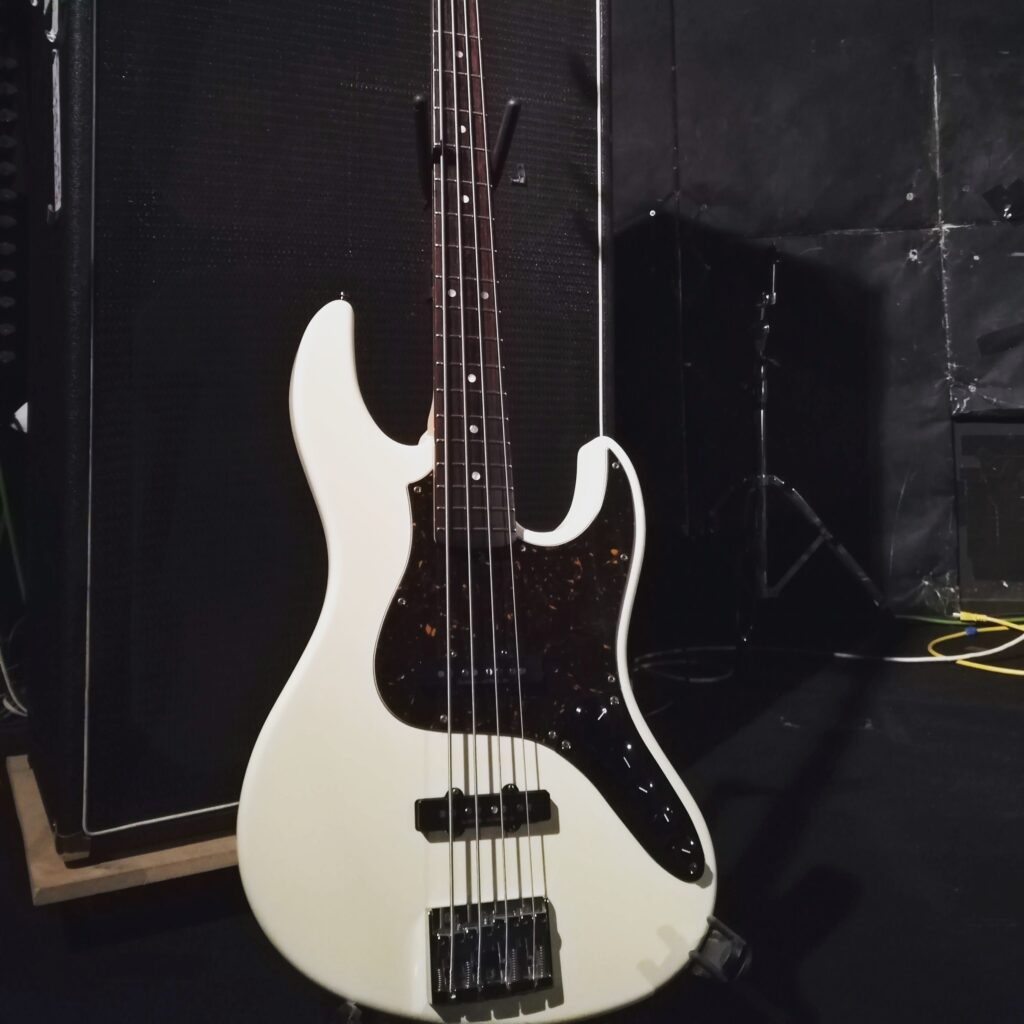
Mr. Takuya, formerly of JUDY AND MARY, said that on the bass guitar, he stops his picking by placing his fingers on the strings.
This is the apoyando technique in classical guitar.
According to Mr. Takuya, “the noise when your finger hits the next string is included in the tight sound.
By doing this, you can get a sound with a solid core.
The same can be said for picking with a pick, or even a guitar.
It sure sounds tight when you stop it against the next string!
If you try it out, you can certainly hear the noise when you hit the neighboring string.
I was able to confirm that by doing this, the sound becomes more grainy.
Same thing with picking with a pick
TAKUYA-san said, “It’s the same thing when picking with a pick.
It’s reverse angle picking.
But when you do this, you’ll notice the difference in sound from uppicking.
Well, actually, you can eliminate the difference to some extent with practice.
Also, even if there is a difference in sound, it becomes an alternate groove.
Making noise on the next string at the same time you’re picking is just like a rimshot!
This is like a rimshot when you hit the snare on the drums.
What is a rimshot: When you hit the snare, you hit the edge of the snare (called the rim) at the same time.
By hitting the rim at the same time, you can make a crisp “clang! I used to play drums too.
I also used to play drums, so what Mr. Takuya said made a lot of sense to me.
When other sounds are played at the same time, it becomes thicker and more powerful.
When I was thinking about this, I remembered that different sounds at the same time can be more powerful.
Even in a simple band composition, matching the timing of the rhythms can add depth to the sound.
Even when playing a single note on the guitar, muting and picking multiple strings and making noises can make the sound more powerful.
However, when you play the fourth string on the bass, there is no string to stop you.
In this case, he said that after picking the fourth string, he would put his finger on the body to stop it.
I’m not sure about this. In fact, I’ve tried it myself.
As far as I could compare the sound, I felt that by placing my finger on the body after picking the 4th string, I could get a thicker sound with a core.
I think this goes against the principle of “other sounds at the same time” that I have been talking about.
So why did it sound so good?
Vibrating the string vertically makes a thicker sound.
As I wrote in my blog before, vibrating the strings in the vertical direction as much as possible makes the bass and the core come out.
Picking is just like playing the Japanese-shamisen.
When you play fast, it’s hard to move your fingers smoothly.
So, when backing, you can use vertical picking to get a tight sound, and when playing fast phrases, you can use horizontal picking.
Summary of stopping picking by hitting the next string
So I tried to see if picking against the next string to stop the picking would improve the sound.
The result was a good sound.
Here’s why.
- Two sounds at the same time, so more power!
- Because it is closer to the longitudinal vibration, the sound has more core.
That’s how I feel.
In fact, you can compare the results by making a loud sound.


